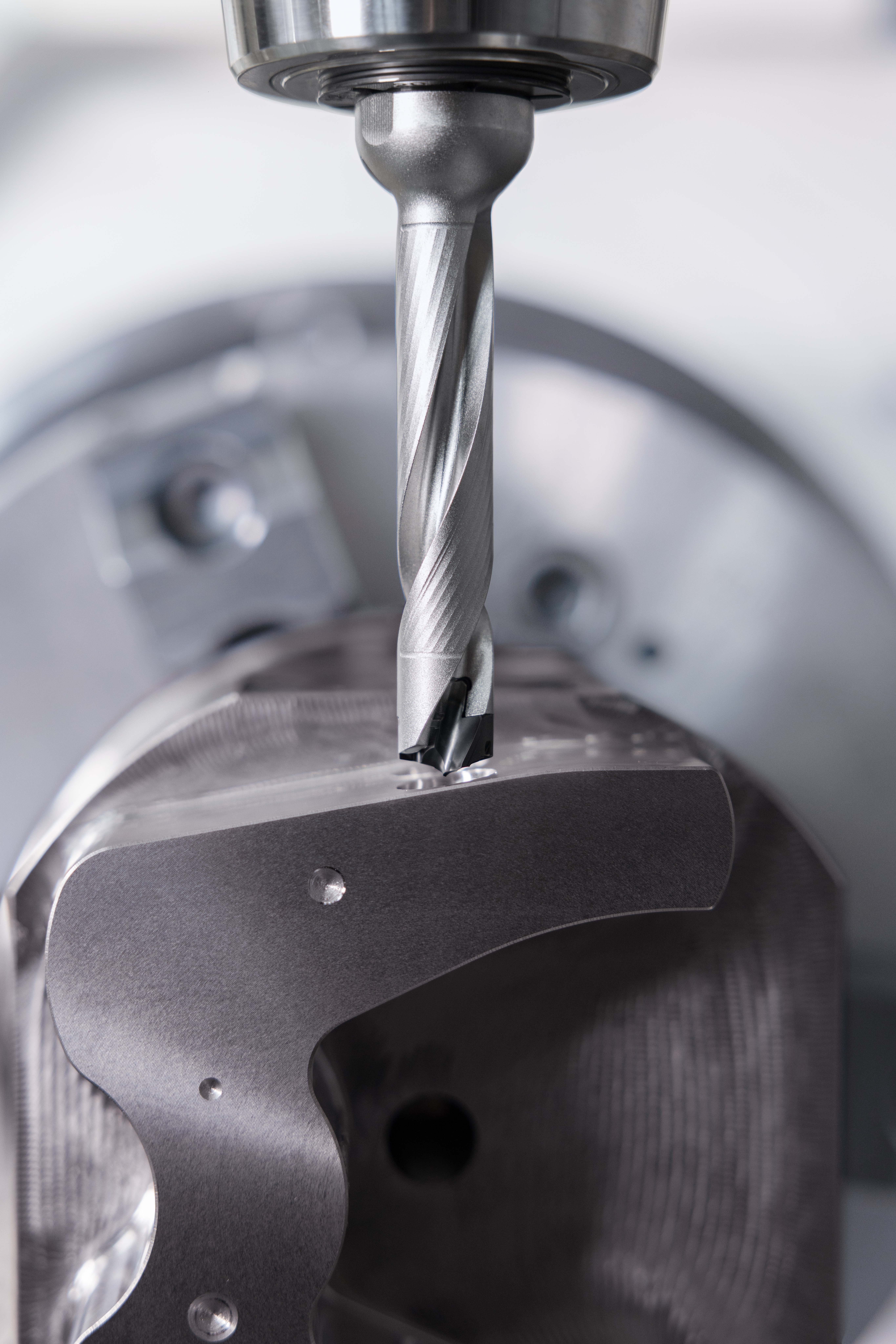
In connection with the launch of the Drion·tec E-Peak D5150 exchangeable head drill, Walter held a digital press conference on Oct. 14 that was presented by Nicole Howind, product manager rotating indexable for Tübingen, Germany-headquartered Walter AG.
Howind noted that holemaking productivity means the ratio of effort to success and described the costs involved in the production process. The costs cover general expenses, including labor and materials, at 42% of the total, machining at 30%, lubrication at 16%, setup at 8% and tools at 4%, with the source being Dr. Waldemar Zielasko, head of the machining team at Daimler AG in Stuttgart, Germany. The machining cost, for example, equals the machine hourly rate times the drilling depth divided by the feed per revolution times the rpm.
The goal when drilling is to boost the machining parameters without compromising hole quality, she explained, and the robust design of the D5150 body and head provides high-feed capability to achieve that objective and significantly reduces the cost per hole.
In addition to reducing machining and set-up times, the self-centering capabilities of the exchangeable head geometry eliminate the need for pilot drilling, and the replaceable head can be exchanged directly in the machine without screws using a mounting key.
Howind said the interface between a head and body is often a weak spot for exchangeable head drills, and Walter developed a patented pre-tension interface to absorb cutting forces effectively with an axial lock feature for pullout protection. The interface’s inclined axial contact surface maximizes clamping, minimizes deflection, and enables precise centering and minimal runout while optimized contact points improve strength, extend interface life, and enable a high level of repeatability.
Another productivity-enhancing feature is the 3D flute geometry with a large axis angle, she added. In combination with internal spiral coolant channels that exit near the cutting zone, users experience reliable chip evacuation even when drilling inclined or curved surfaces.
Targeted for industries with high-volume hole production, Howind said the D5150’s primary application is drilling stainless steel and heat-resistant superalloys — both of which are seeing a growing demand. The secondary application is cutting steel, cast iron, and non-ferrous metals, as well as hardened steel and cast iron.
The toolmaker reports that it is initially introducing the D5150 with a diameter from 9 to 17.99 mm (0.354" to 0.705") and in drilling depths of three, five, and eight times diameter. Multiple head dimensions can be used in the same drill body to reduce storage and purchasing costs.
For example, when drilling a Hastelloy C32 cluster holder, Howind said the D5150 produced 540 holes and lasted 5.9 m (19.4') versus 432 holes and 4.7 m (15.4') for the competitor’s drill while achieving a 40% reduction in machining cost.
She concluded by emphasizing that Walter not only provides cutting tools to customers but also offers complete process solutions.
Contact Details
Related Glossary Terms
- centering
centering
1. Process of locating the center of a workpiece to be mounted on centers. 2. Process of mounting the workpiece concentric to the machine spindle. See centers.
- coolant
coolant
Fluid that reduces temperature buildup at the tool/workpiece interface during machining. Normally takes the form of a liquid such as soluble or chemical mixtures (semisynthetic, synthetic) but can be pressurized air or other gas. Because of water’s ability to absorb great quantities of heat, it is widely used as a coolant and vehicle for various cutting compounds, with the water-to-compound ratio varying with the machining task. See cutting fluid; semisynthetic cutting fluid; soluble-oil cutting fluid; synthetic cutting fluid.
- feed
feed
Rate of change of position of the tool as a whole, relative to the workpiece while cutting.
- superalloys
superalloys
Tough, difficult-to-machine alloys; includes Hastelloy, Inconel and Monel. Many are nickel-base metals.


